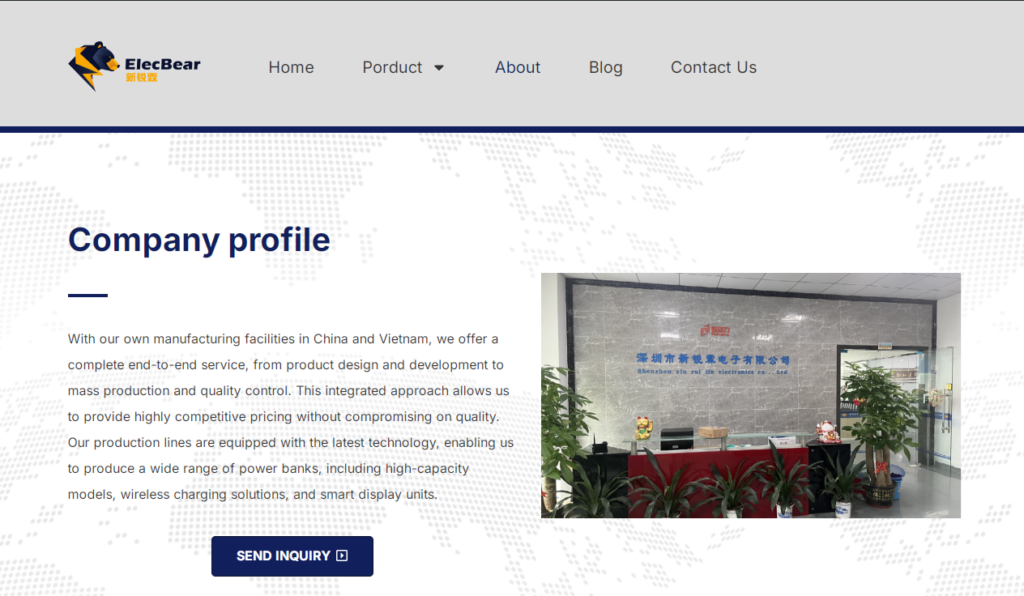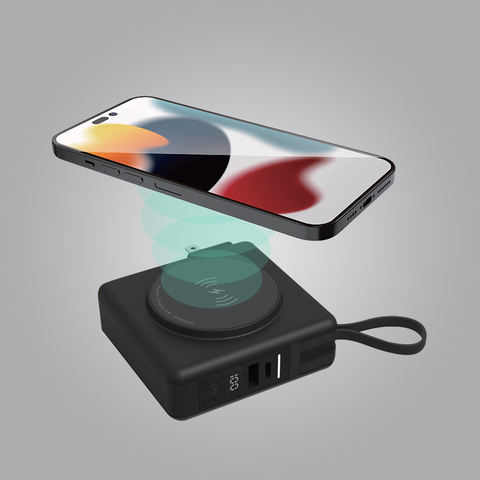
Quick Charging Technology Revealed: Can Your Power Bank Keep Up With Your Phone’s Speed?
Modern smartphones support quick charging, but not all power banks match up. If your power bank can’t keep up, you’re losing out on efficiency and convenience. Let’s dive into quick charging technology and how choosing the right power bank ensures your phone charges at lightning speed.
Quick charging technology relies on a power bank with compatible output wattage and fast-charging protocols like Quick Charge or Power Delivery (PD). Using the right cable and device ensures a faster, safer charge, optimizing your phone’s battery performance. Not all power banks offer this functionality, so compatibility is key.
What Is the Difference Between Quick Charging and Fast Charging?
Quick charging and fast charging may sound similar, but they cater to different needs. Quick Charge (QC), developed by Qualcomm, is commonly used for Android devices and works by delivering higher voltage and current to speed up charging. This technology can bring a smartphone battery to 80% in just 35 minutes.
On the other hand, fast charging is a broader term that encompasses various technologies, including Quick Charge and Power Delivery (PD). PD, which is more common in devices with USB-C ports (like newer iPhones and many Android phones), adjusts the power output dynamically based on the device’s needs. It can deliver up to 100W of power, making it suitable for both smartphones and laptops.
When choosing a power bank, ensure it supports the same fast-charging standard as your device. For instance, iPhone users benefit more from PD-compatible power banks, while many Android users can maximize speed with QC-enabled models.
Does Fast Charging Work With Power Banks?
Fast charging works seamlessly with power banks that are equipped with the necessary technology. Here’s how it works:
- Compatible Power Bank: The power bank must support fast-charging protocols like QC or PD. Look for labels such as “PD 18W” or “QC 3.0” on the product.
- Matching Cable: Not all cables are created equal. To enable fast charging, use a certified cable designed for high-speed data and power transfer.
- Device Compatibility: Your phone or tablet must support the same fast-charging technology. Older devices or entry-level smartphones might not utilize fast charging, even with compatible accessories.
Using a mismatched power bank or cable can lead to slower charging speeds or even overheating, which can degrade your device battery over time. High-quality power banks ensure that the fast-charging process is efficient and safe.
How to Use a Power Bank for Maximum Charging Speed?
Maximizing charging speed involves more than just owning a fast-charging power bank. Here are actionable tips to get the most out of it:
- Use High-Quality Cables: Inferior cables slow down charging and can overheat. Opt for thicker, heavier-gauge cables with certifications such as “USB-IF certified” for optimal performance.
- Check Output Ports: Most modern power banks have multiple ports with varying outputs (e.g., 10W, 18W, or 30W). Use the highest-rated port for the fastest charging speed.
- Charge the Right Device First: Power banks divide power between ports. If you’re charging multiple devices, prioritize the one that supports fast charging on the highest-wattage port.
- Keep the Power Bank Charged: A fully charged power bank performs better than one running low on battery.
These small adjustments can shave minutes off your charging time, giving you more time to focus on what matters.
What Increases Charging Speed?
Several factors influence charging speed, and understanding these can help you make smarter choices:
- Power Output: A power bank with higher wattage (e.g., 30W) charges faster than one with lower wattage (e.g., 10W). Ensure your device can handle the power to avoid potential damage.
- Device Efficiency: Newer smartphones often support faster-charging protocols, making them charge quicker than older models.
- Cable Quality: High-quality cables reduce resistance and ensure more power reaches your device.
- Environment: Charging in cooler conditions can prevent the heat build-up that slows down charging speeds.
Investing in the right combination of power bank, cable, and settings ensures maximum efficiency and minimal downtime.
What Are the Disadvantages of Quick Charging?
While quick charging is incredibly convenient, it does come with a few downsides to consider:
- Heat Generation: Fast charging can generate significant heat, especially with older or inefficient power banks. Excess heat can degrade your phone’s battery over time.
- Battery Wear: Frequent use of quick charging cycles (charging from 0% to 100%) can lead to faster battery capacity loss.
- Potential Incompatibility: Some devices may experience glitches or reduced battery health if the wrong fast-charging standard is used.
Choosing a high-quality power bank with advanced temperature control and safety certifications can alleviate these concerns. Features like built-in surge protection and heat dissipation ensure your devices remain safe during quick charging.
Power Bank Features and Benefits
When selecting a power bank, focus on these features to meet your needs:
- Capacity: Power banks come in various capacities, from 5,000mAh for quick top-ups to 20,000mAh or more for multiple full charges. Consider how often you need to charge your devices on the go.
- Multiple Ports: Dual or triple-port power banks let you charge multiple devices simultaneously. Some models even offer USB-A and USB-C ports for universal compatibility.
- Fast-Charging Support: Whether it’s QC 3.0 or PD 18W, fast-charging protocols ensure your devices spend less time connected to the charger.
- Portability: Compact and lightweight power banks are easier to carry, while larger models often offer higher capacity and additional features.
Our power bank combines these features to provide you with a convenient, reliable, and safe user experience.
Elec-bear is a professional high-tech enterprise integrating R&D, production, sales. we offer a complete end-to-end service, from product design and development to mass production and quality control. This integrated approach allows us to provide highly competitive pricing without compromising on quality. Our production lines are equipped with the latest technology, enabling us to produce a wide range of power banks, including high-capacity models, wireless charging solutions, and smart display units.

How Does a Power Bank Work for iPhone and Android?
Power banks are designed to charge various devices, but compatibility varies:
- For iPhones: Choose a power bank with MFi certification to ensure compatibility with Apple’s Lightning cables. Many iPhone users benefit from PD fast charging, which requires a USB-C to Lightning cable.
- For Android: Android users typically prefer power banks with USB-C ports, which support faster charging speeds and universal cable compatibility.
Some universal power banks offer multiple port options, allowing users to charge both iPhone and Android devices simultaneously without sacrificing speed or safety.







